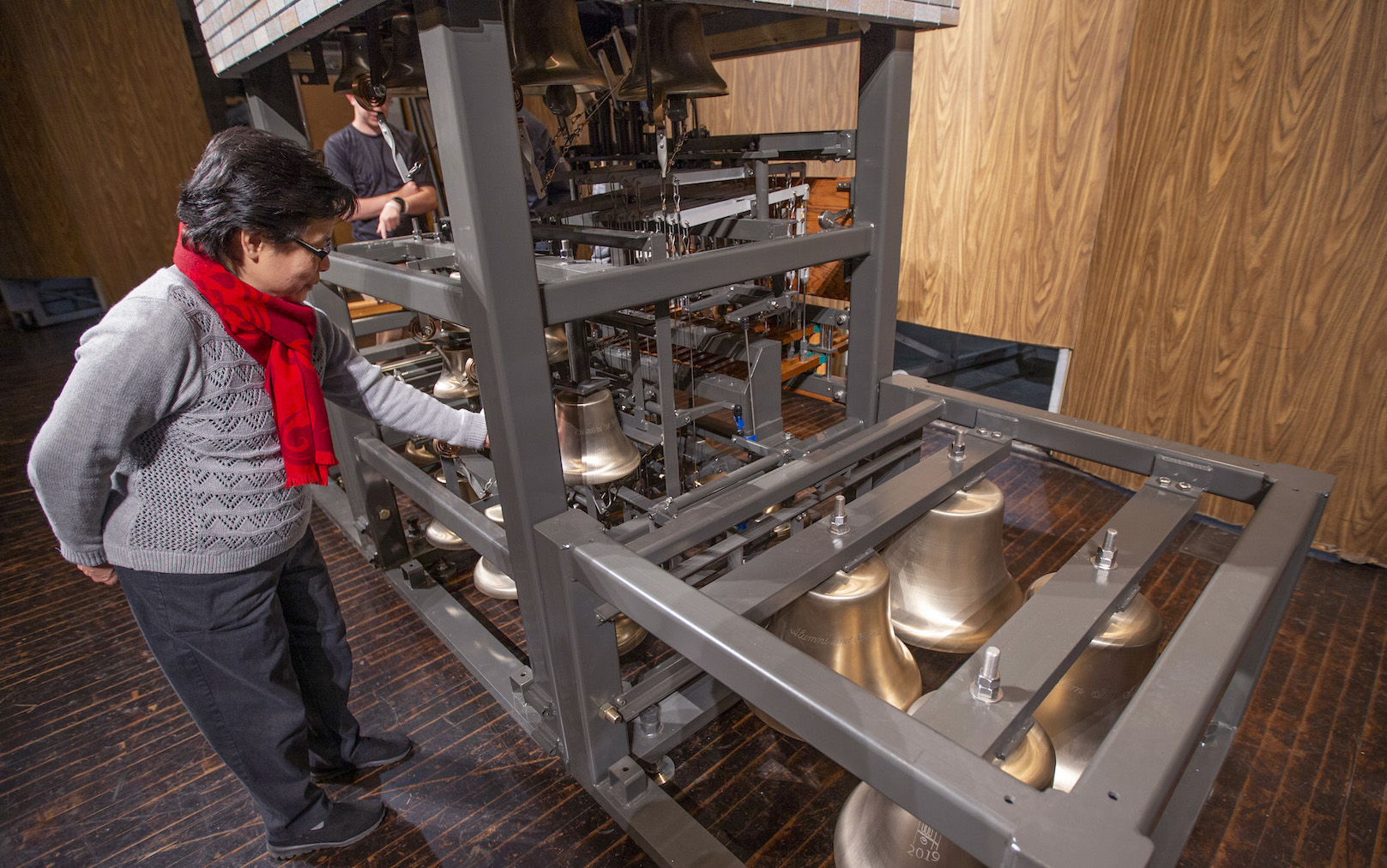Nothing tugs at the heartstrings of Iowa Staters quite like the iconic brick campanile and its melodic 50-bell carillon. Whether you’re an alum or friend of the university, a current student or a faculty or staff member, you know the peace and tranquility that washes over you while walking across campus on a crisp autumn day, listening to the harmonious tones of the carillon’s bells.
Beginning this summer, you’ll have a chance to share the magic of the campanile and carillon at your own event, thanks to an innovative idea initiated by Tin-Shi Tam, the Cownie Professor of Music and Iowa State’s carillonneur.
Labor of love
We can thank Edgar Stanton for bringing this great joy and physical landmark to Iowa State University. Stanton graduated from Iowa State’s first class in 1872. He spent 50 years on campus as a student, faculty member, head of the mathematics department, secretary to the board of trustees, dean of the junior college and — on four separate occasions — acting president.
Edgar’s wife, Margaret MacDonald Stanton, was the university’s first dean of women. After Margaret passed away in 1895, Edgar envisioned a lasting memorial in her honor — a bell tower. Appropriate funding and approvals were secured, and construction of the campanile commenced in 1897; it was completed in 1898. The carillon began with 10 bells in 1899 followed by another 26 bells in 1929. Thirteen bells were added in 1956, and one final bell was placed in the carillon in 1967, bringing the total to 50.
A 'model' idea
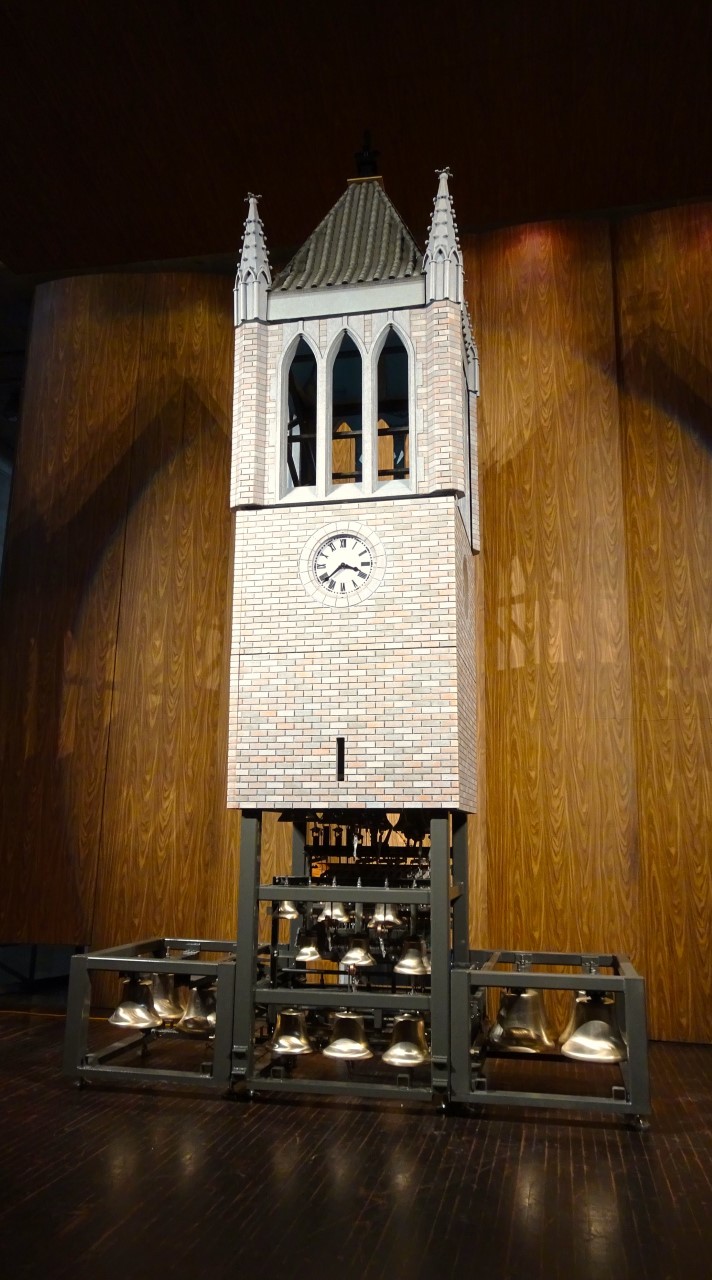
In the spring of 2015, Tam came up with the idea of creating a working, mobile model of the campanile and carillon. Her goal was to share the beloved landmark and its heritage with others across the state and throughout the nation.
“This model will be used at various university events and outreach programs, such as graduations, alumni events, state fairs and county fairs,” Tam said. “It will also serve as an educational tool and a musical instrument, playing with orchestras.”
To get the project started, Tam worked with faculty members in engineering, design, music and theatre to initiate the multidisciplinary, student-led effort. She provided students with a set of broad requirements — replicate the look of the original campanile; create a playable carillon; design a sturdy structure that fits through a double door and is easy to assemble and dismantle; and incorporate great acoustics. Tam also requested visible mechanisms so onlookers could see the clappers strike the bells as the instrument is played.
A collaborative design
In the fall of 2015, a team of faculty members was established to oversee the project. Student teams began working on the model’s various design elements in the spring of 2016. Senior design students in the mechanical engineering capstone class developed an architecturally accurate, safe and mobile system and structure. A student-led fundraising effort was also established at this time to cover the model’s $190,000 price tag.
“The project is unique in many ways. It has brought together different departments to collaborate on an exciting yet challenging project that celebrates ISU and what we offer as a university … innovation, creativity and excellence.”
In the fall of 2016, mechanical engineering and design students modified the original design from a tower-lifting system to a scissor-lift mechanism, allowing the model to rise and lower more easily. The engineering students also determined which materials to use for the tower facades so they could easily and safely be set up and taken down, yet look exactly like the campanile. Other students continued to modify the model’s design throughout the spring and fall semesters of 2017.
Robert Sunderman, associate professor of design and technical theatre, advised students throughout the design and engineering process, ensuring the model is a spitting image of the original campanile. Under his supervision, ISU Theatre students and scene shop students meticulously painted the model’s façade to closely replicate the original campanile. He is honored to be part of the team bringing this special project to fruition.
“The project is unique in many ways. It has brought together different departments to collaborate on an exciting yet challenging project that celebrates ISU and what we offer as a university … innovation, creativity and excellence,” Sunderman said.
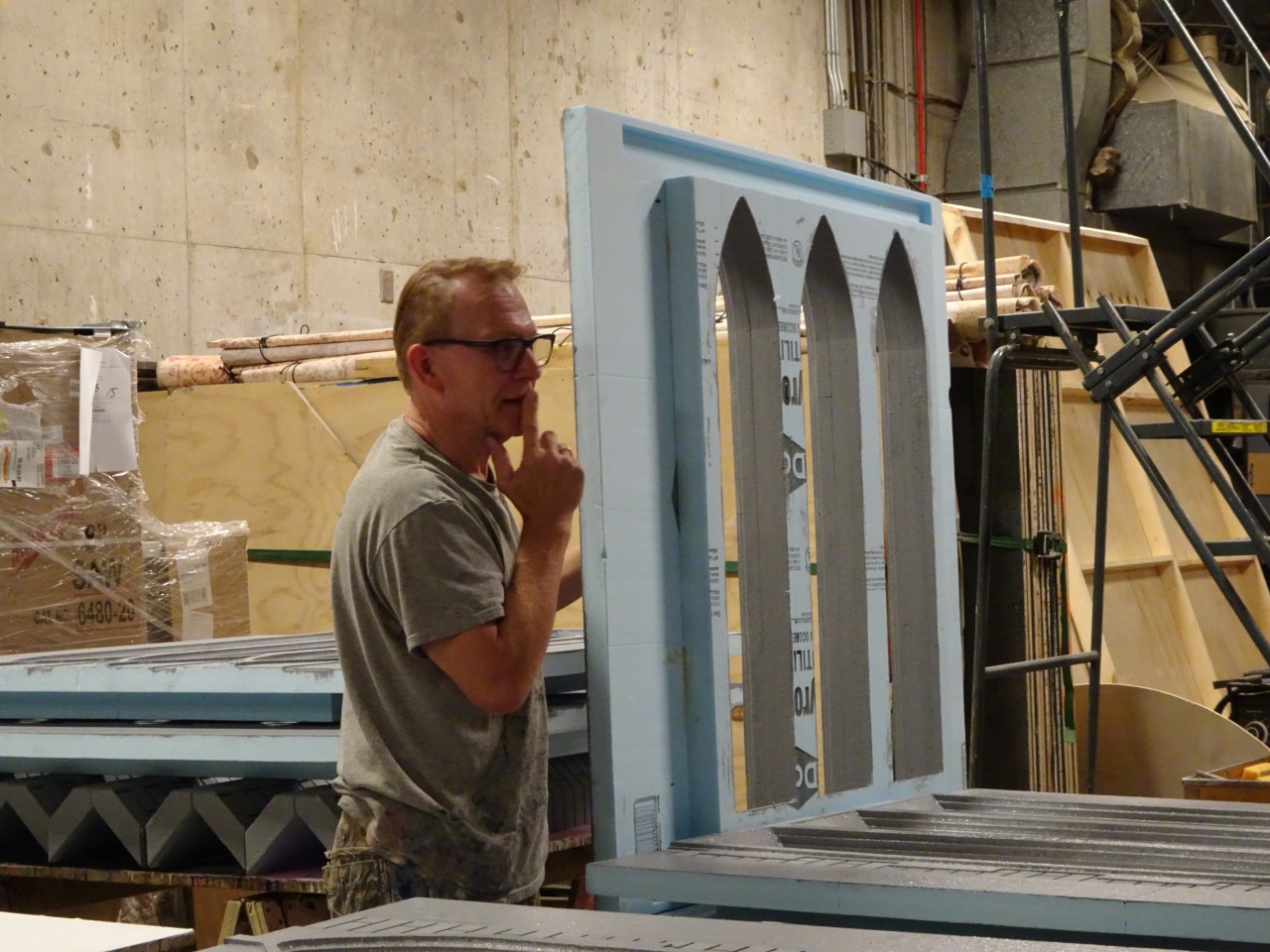
The innovations for this project are more than structural. In the spring of 2018, students in senior electrical, computer and software engineering design classes developed a digital carillon tutorial. This tutorial gives individuals a chance to play the carillon by following falling notes on a screen and lights above the keys.
“This project not only provides educational experiences for our students, it is truly a collaborative project to showcase our Cyclone spirit,” Tam said.
Construction of the carillon begins
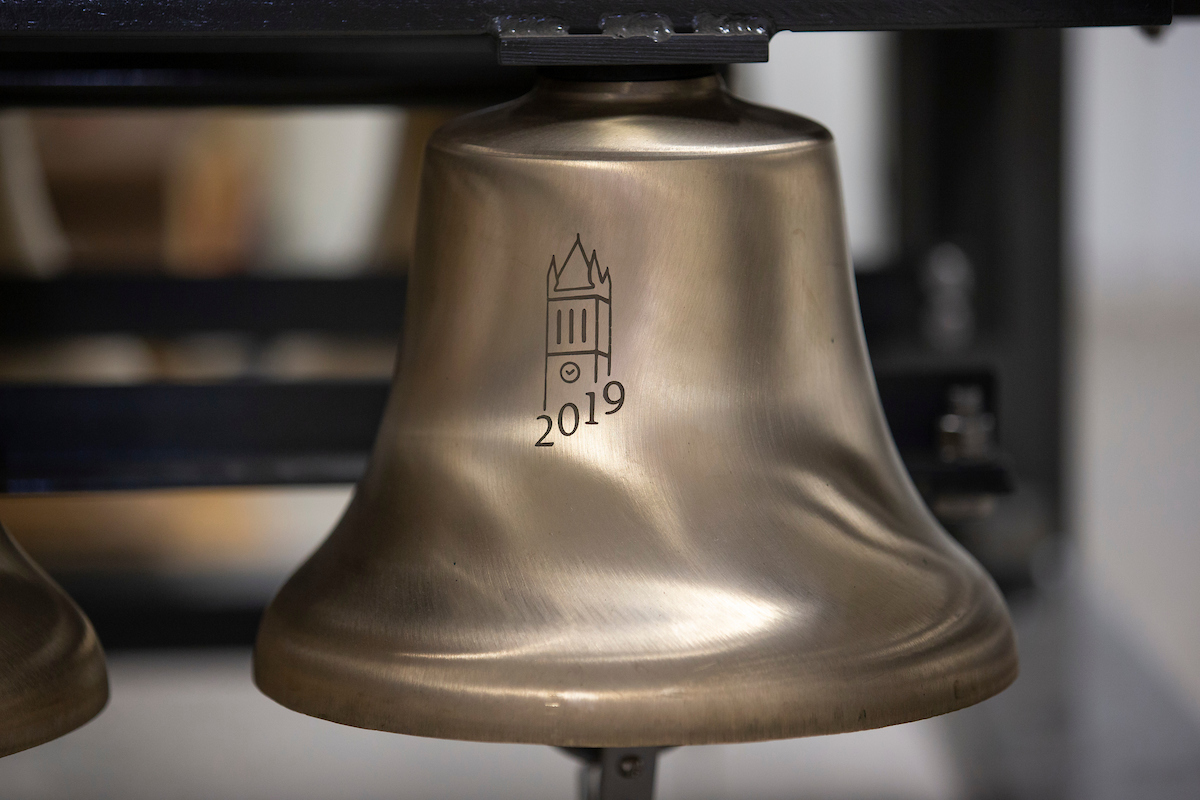
Construction of the model started in April 2018. The first bell for the 27-bell carillon model was cast on campus in Black Engineering’s metal-casting lab. Representatives from the Ohio-based Meeks, Watson and Co. bell foundry worked with lab technicians to cast the bell, which weighs about 36 pounds, and is 10 inches in diameter and 8 inches tall. The remaining bells were cast and tuned in Ohio. The largest bell weighs 139.5 pounds and is 14 inches tall; the smallest bell is 15.5 pounds and measures 5 inches tall. The model’s final height is just over 20 feet and it weighs approximately 3,000 pounds.
The unveiling
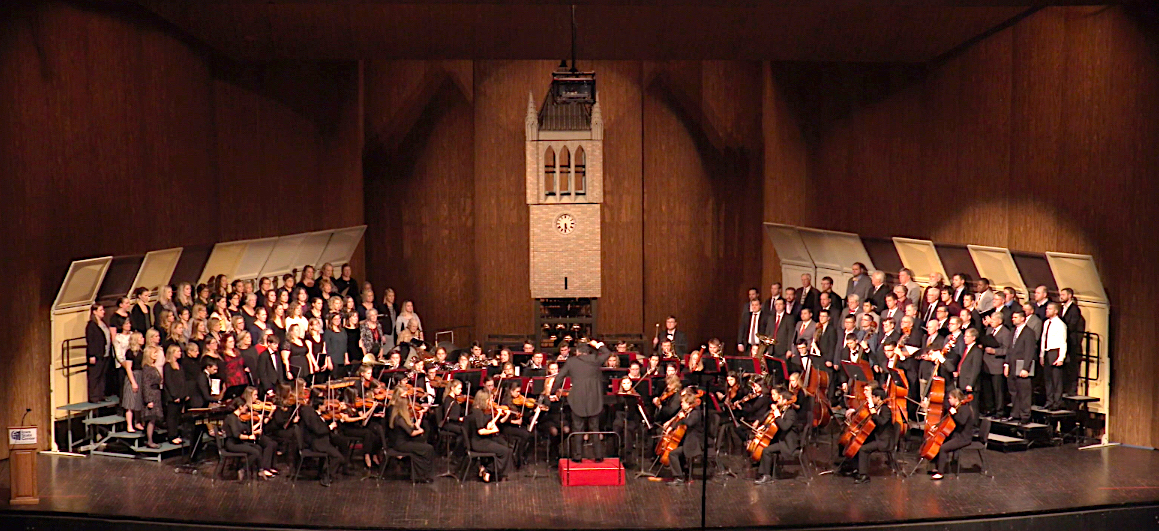
Four years after Tam proposed the idea of a model campanile and carillon, the initiative became a reality on Oct. 27, 2019, when Iowa State held the “Bells of Iowa State” Gala Anniversary Concert in Stephens Auditorium to celebrate the 120th anniversary of the Stanton Memorial Carillon and Tam’s 25th anniversary with the university.
“This project not only provides educational experiences for our students, it is truly a collaborative project to showcase our Cyclone spirit.”
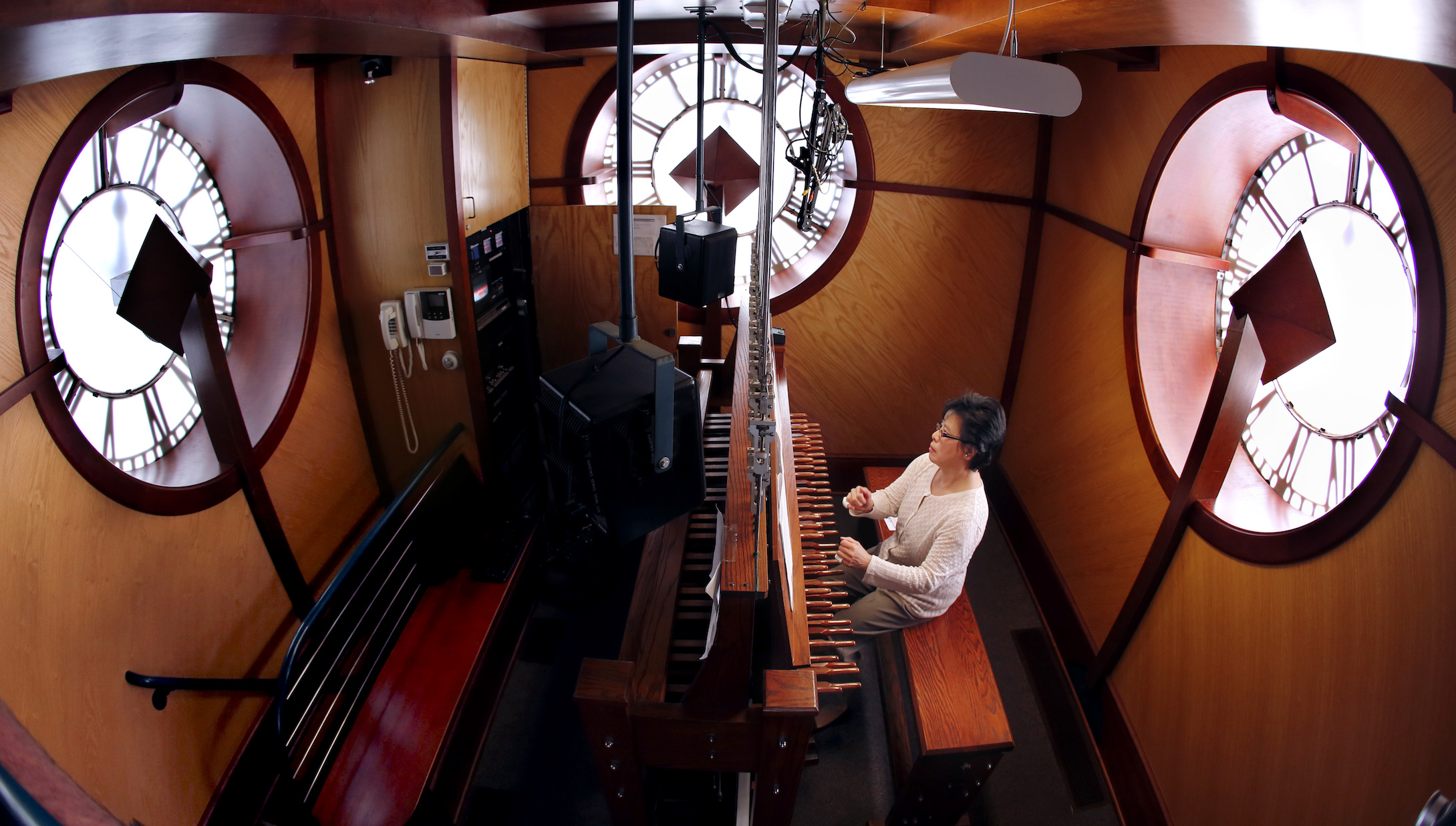
During the concert, the model was unveiled and Tam performed the “Bells of Iowa State,” a highly appropriate choice. The concert featured Iowa State’s symphony orchestra and wind ensemble as well as an alumni choir. The event also showcased the performances of two commissioned works, including Department of Music and Theatre Professor Emeritus Jeffrey Prater’s “Star Bells” (2002) for carillon and symphony orchestra, and the premiere of Andrew Ardizzoia’s “Fanfares, Anthems, Peals — Rhapsody on ‘The Bells of Iowa State’” for a 27-bell carillon, symphony orchestra and choir. Ardizzoia is assistant professor of music and director of composition and instrumental studies at Muhlenberg College, Allentown, Pennsylvania.
On the road
Transporting the model to Stephens Auditorium for last fall’s concert uncovered some minor issues that need to be resolved before the model can move safely from place to place. Tam expects everything to be in working order by this summer. In the future, the model will be the perfect accompaniment to out-of-Ames performances at various county Extension and Outreach offices or even a future Iowa State Fair. The model may be rented for private events as well, such as weddings, alumni receptions or concerts.
“We anticipate a lot of alums will connect with the model,” Tam said. “It is also a musical instrument so we can do weddings, and I foresee that it will be in concert settings. Any orchestra that would like to have real bells as part of their performance, we will be able to provide.”
Anyone interested in renting the model for future events should contact Iowa State’s Department of Music and Theatre at 515-294-3831 or visit www.music.iastate.edu/carillon/campmodel.
No place like home
When the campanile-carillon model is not on the road, it will be housed in a yet-to-be-determined location on campus. Tam hopes this interdisciplinary, student-led project will continue to inspire collaborations among students for years to come.
“We anticipate a lot of alums will connect with the model.”
“The idea is that we are not going to store it away behind closed doors. We want to have this model seen all the time,” Tam said. “It will represent that it is a cross-disciplinary student project. Maybe when students see it they will keep innovating and seeing what we can do better.”
Information for this article was compiled from Iowa State’s Department of Engineering, Department of Music and Theatre, Office of Admissions and Inside Iowa State.
